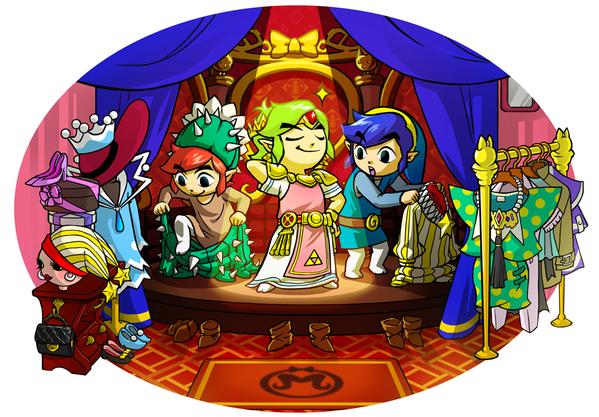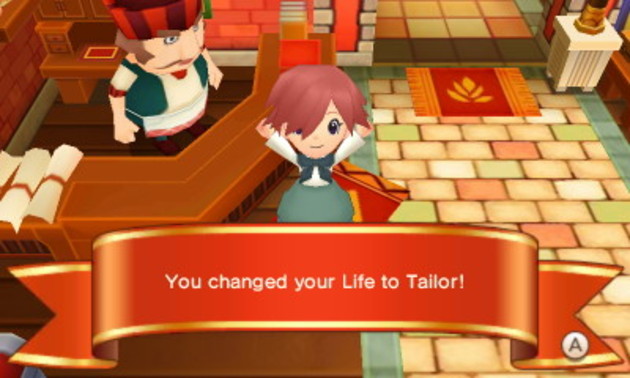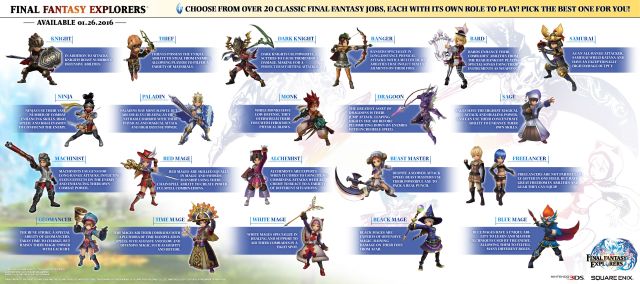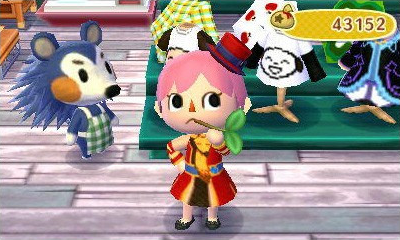With a few exceptions, most of the games I have covered in this column have been made in Western countries. This hasn’t been intentional, nor does it really speak to my own gaming habits. In fact, most of the new titles I played this year were by Nintendo, and fashion played a pretty big part in this. Japanese-made games do tend to have a certain stylishness that Western games often lack.
Part of this is of course cultural; it’s slightly less frowned upon to be interested in being fashionable and stylish there, at least in any major metropolitan center, and of course, that makes its way into the games. Recent Final Fantasy games in particular are a good example, because if you’ve ever frequented a Japanese street style blog, you’ll see that the clothing worn by characters like Squall, Lightning, and even Tidus look like something a hip kid in Harajuku would be wearing. Japanese games also have a tendency to include clothing as a part of gameplay. Most of my favorite games that I played over the last year, like Story of Seasons and Fantasy Life, include this element, and not just for aesthetic purposes. In Splatoon, which was probably the biggest hit Nintendo has had in a while, looking cool is just as important as splattering your rivals with paint.
There are a lot of reasons why this is happening. Anime, of course, has had a huge influence on games coming out of Japan, and fashion is often an important component. Would a Magical Girl anime be as good if the amount of detail they put into the costumes wasn’t evident? Kawaii culture certainly plays a large role: It’s pretty much only in Japanese games that I can dress in my colorful, ruffly, pattern-heavy personal style, whereas Western games prefer to be more “gender neutral,” which actually just means more stereotypically masculine. I’ve bought clothing in Animal Crossing that literally already exists in my closet, as well as things I wish were in my closet. I’ve even been able to prototype outfits that I could then wear out in the real world.
There’s also a bit of a precedent for it. The job system, which was popular with early ’90s JRPGs, particularly Final Fantasy games, has always used outfits as a way of signifying which class you’ve switched to, and the system is making a bit of a comeback. Square Enix used it again in a slightly altered form in Final Fantasy X-2’s Dressphere system, and it was revived more recently in 2012’s Bravely Default. Bravely Default, of course, is getting a sequel, and Nintendo just announced that the job system will be back in the 3DS title Final Fantasy Explorers. These newer versions, of course, have even more elaborate costuming than the old 16-bit titles due to better technology. So, what essentially started as a design problem (How do players easily know which class they are at any given moment?) has kind of become a new way for the player to express themselves, because if you’re like me, you only pick classes that suit particular characters—and Final Fantasy Explorers‘ looks are good. I like Blue Mage and Geomancer a lot, though I have no idea why a Geomancer uses a bell for a weapon—but I’m excited to find out!
But the main reason is pretty simple: money. Nintendo in particular is moving a little faster in terms of adding more fashion elements to their games, mainly because it’s potentially profitable. Most of their new games, especially for their portable systems, have had fashion elements, and it’s something I’ve been noticing more and more over the last few years. Most notably, Pokemon X had a huge fashion element, where there was a new shop with distinct clothing styles in every new town that you went to. I wanted to progress to each new town just to be able to get new outfits, and I remember all of my friends who were playing (of all genders, by the way), dying to get into the ultimate clothing shop, Boutique Couture in Lumiose City, which was only accessible after you did specific things. (It was totally worth it.) I sunk a lot of time into that game, doing challenges to earn money to buy more clothes, and it was super fun, and now Nintendo is releasing a Legend of Zelda game, Triforce Heroes, where you can dress Link up however you want, including as a princess.
It’s obvious that Nintendo is trying to appeal to the female gamer demographic with these moves, though of course, there’s nothing wrong with people of any gender enjoying this aspect of a game. Giving players clothing options can give them a deeper sense of ownership over a character, which just gives the player a new way to interact with the game world and create their own stories. This, of course, isn’t something that applies to every game, but it can certainly apply to a lot of them.
The reason why Nintendo in particular is trying to reach (or I should rather say, acknowledge) this demographic is like I said before: it makes money. Of course the female demographic has always existed in games, but it hasn’t been until very recently that I actually feel kind of catered to as a gamer. As in North America, the gender split for gamers in Japan is about equal, with women having a slight lead over men, but slightly more women in Japan definitely own more portable consoles like the 3DS than men do. This is why we see so many 3DS games with fashion mechanics. Animal Crossing in particular is a huge hit with women. Nintendo’s console sales have been stagnating since 2011, something not even 12 million slightly different models of 3DS over the past few years has been able to overcome, so of course they don’t want to alienate the audience that they know is there, and the audience that maybe doesn’t play games but might if there’s something they like in it.
A fashion mechanic is usually a fairly simple (though time consuming, if you want to have lots of options) thing to add to a game. They have also been trying to reach mobile gamers, and most mobile gamers are women. Nintendo has recently decided to go after the mobile market more directly by producing mobile titles that will be out next year. Their first, Miitomo, will be out in March and isn’t even billed as a game, per say, rather a communications app using their signature Miis. While this title will be free-to-play, you can bet that clothing options for your Mii will probably be a major optional revenue stream.
(featured image via Nintendo)
Megan Patterson is a freelance writer and the science and tech editor of Paper Droids, a feminist geek culture site. When she’s not writing, you can find her on Twitter, talking about how cute she is or crying over something ridiculous (usually videogames).
—Please make note of The Mary Sue’s general comment policy.—
Do you follow The Mary Sue on Twitter, Facebook, Tumblr, Pinterest, & Google +?












Published: Dec 11, 2015 03:01 pm